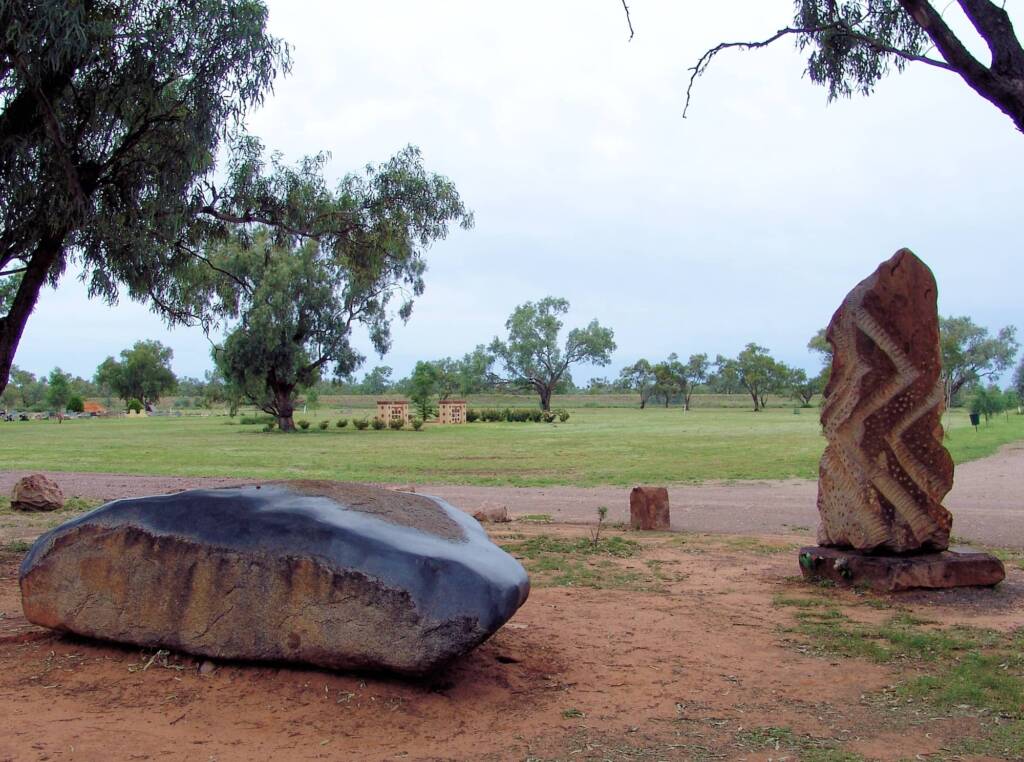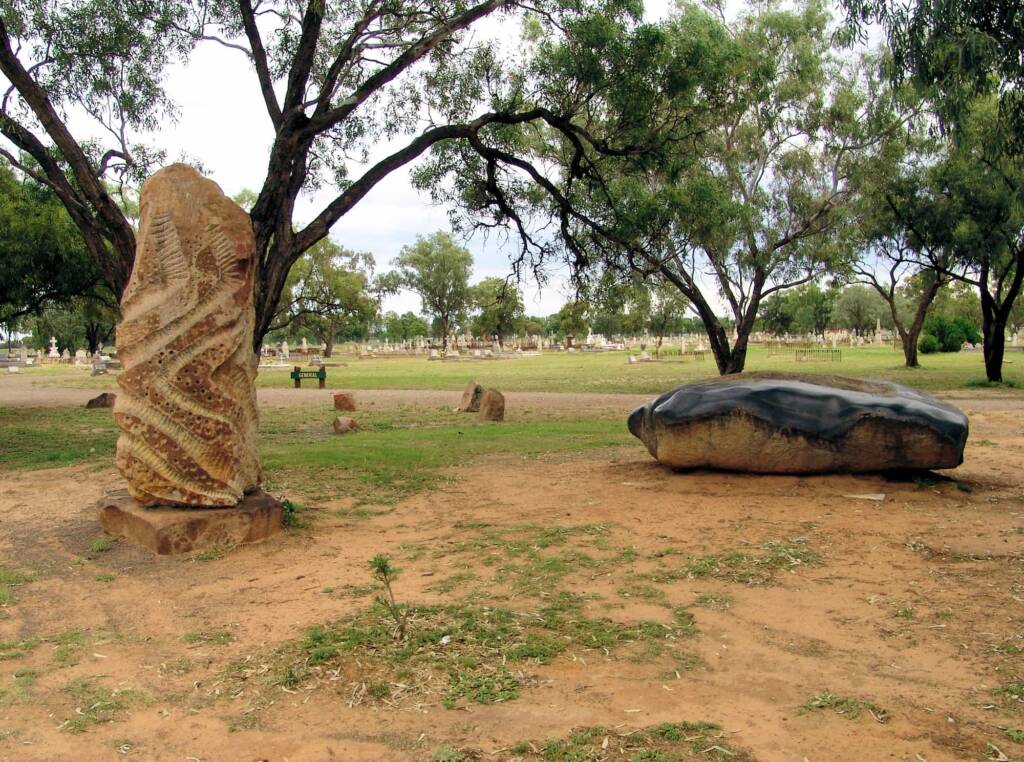Fred Hollows Memorial
Bourke Cemetery, BOURKE NSW 2840 – it was here in Bourke that Australian of the year (1992), Professor Fred Hollows was laid to rest on February 17th 1993. Fred is best remembered for his very public work in Eritrea, he began his work with the Cataract Blindness among the Aborigines of the Bourke area. Today, many people can now see because of Fred Hollows.

Who is Fred Hollows?
Fred Hollows was many things to many people – teacher, mountaineer, woodworker, advocate, surgeon, father, husband and friend.
Born in New Zealand, Frederick Cossom Hollows (9 April 1929 – 10 February 1993) was mostly an eye doctor of international renowned and a social justice campaigner who championed the right of all people to be able to access high quality and affordable eye care and good health.
As a young man Fred studied to become a minister. He enrolled in medical school at the University of Otago (New Zealand) after he discovered he wasn’t cut out to be a clergyman. He spent several years practicing medicine in England and Wales before moving to Australia to take up the position of Associate Professor of Ophthalmology at the University of New South Wales (Sydney) in 1965.
In the 1970s Fred began his work with Indigenous communities. He helped establish the Aboriginal Medical Service in Redfern (Sydney) and was instrumental in the establishment of other Aboriginal Medical Services throughout Australia.
In Australia, Fred Hollows is perhaps most widely recognised for his contribution to a Royal Australasian College of Ophthalmologists’ national program, surveying and servicing the eye health needs of more than 465 remote communities. As part of the National Trachoma and Eye Health Program (1975-1979), more than 100,000 people were screened and treated for eye disease, 27,000 people were treated for trachoma, 7,000 pairs of glasses were distributed and 1,000 operations performed.
In the 1980s Fred’s focus turned to international health issues. He visited Bangladesh, Burman, Eritrea, India, Nepal Sri Lanka and Thailand as a consultant working for the World Health Organization. He also trained eye doctors from Eritrea, Nepal and Vietnam before he died in 1993.
Commitments Fred made when he was alive, to establish comprehensive eye health programs in those countries, were met by the ophthalmologists working with the foundation set up in Fred’s name just five months before he died. Because of one man’s dreams, millions of people around the world can now see again.
Fred Hollows was survived by his wife Gabi and his children Tanya, Ben, Cam, Emma, Anna-Louise, Ruth and Rosa.
Source: park signage

About this grave site
In February 1993, after an official state funeral at St Mary’s Cathedral in Sydney, and in accordance with his own wishes, Fred Hollows was laid to rest in Bourke, where the red dirt and mulgas signal the start of the outback which he loved so much.
Family and friends gathered in Bourke to farewell Fred. After first visiting the Aboriginal Medical Service, Fred’s procession then travelled through town to ‘Kinchela’, a nearby property just outside of Bourke, where everyone shared their memories and stories at a wake hosted by locals Malcolm and Jan Fraser and Inan and Merl Fraser. A moving service was then held at Bourke Cemetery.
Fred was buried with his glasses, a bottle of whisky, lettrers from some of his children, sawdust from his workshop, his pipe and a tin of tobacco. His coffin was draped with a pall which was lovingly hand painted by the people of Enngonia.
Fred’s grave site is encircled by boulders from nearby Mt Oxley – they are laid out in the shape of an eye. Local Indigenous artists, international sculptors and Bourke residents carved the sandstone memorial at the western end of the site. The plaque reads ‘Fred Hollows, Eye Doctor. The key he used to undo locks was vision for the poor‘, taken from a poem by Bruce Walker.
In February 2006, the original gravestone was replaced with a new granite sculpture, commissioned by the Hollows’ family, created by Austrian sculptor Andreas Buisman and erected with the generous support of friends, the Bourke Shire Council and local community.
The sculpture is a fitting tribute to Fred, capturing the many aspects of his personality, particularly his love of nature, the outdoors and climbing. The Hollow’s family invite visitors to touch and feel the rock, to climb on it or sit peacefully and contemplate life.
For them, the polished surface of this new installation is reminiscent of the surface of those small medical marvels, pieces of clinical grade plastic called intraocular lenses. IOs replace the natural damaged lens of the eye and restore sight to those living with cataract blindness. Factories in Eritrea and Nepal, named after Fred, manufacture these lenses to a quality and coast equal to those produced by their international and commercial equivalents.





